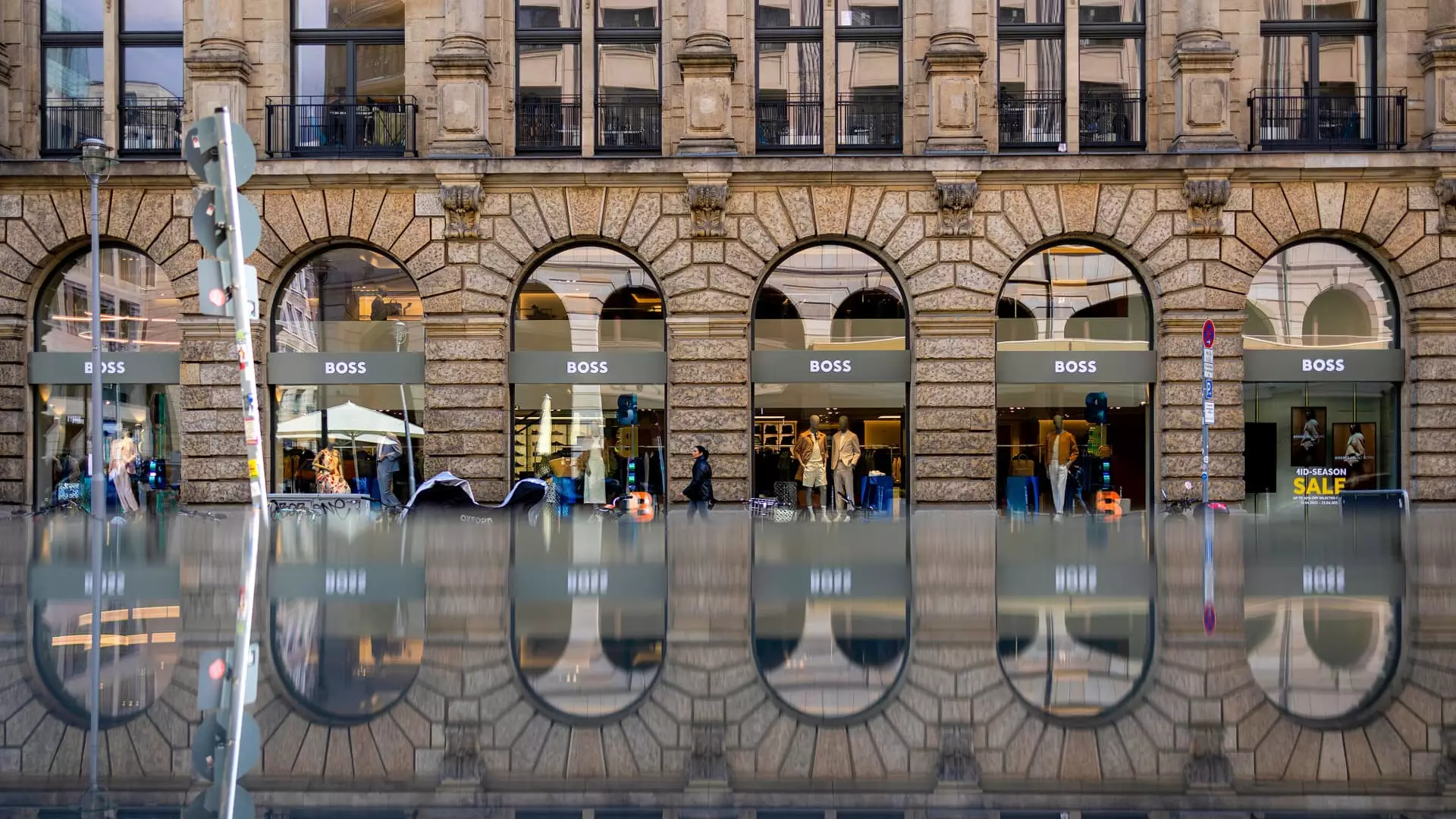The market’s reaction to Hugo Boss’s first-quarter sales report has been nothing short of a rollercoaster, illustrating the complexities that high-end brands face in today’s turbulent economic climate. Despite a minor sales dip of 2%, which translates to a revenue of €999 million (approximately $1.13 billion), the company managed to rise above analyst predictions in an LSEG poll that forecast a revenue of €979 million. Following the announcement, shares skyrocketed, resulting in an impressive rise of up to 8.8%. This spike is indicative of a market that favors optimism, but beneath this brief moment of euphoria lies a consumer landscape that’s evolving rapidly, and not necessarily for the better.
Amidst the celebration of what appeared to be “good enough” results, one can’t help but question the internal and external pressures that led to such a lackluster performance. CEO Daniel Grieder emphasized the challenges brought on by macroeconomic uncertainty, with particular reference to a waning consumer appetite in the Asia-Pacific region and the looming specter of tariffs. A 2% decline may read merely as a bump in the road, but for a luxury brand like Hugo Boss, it exemplifies an unsettling trend that demands scrutiny.
China: The Powerful but Unpredictable Market
China has long been heralded as a critical engine of growth for luxury brands, driving demand and profitability. However, Hugo Boss’s recent remarks on “ongoing subdued consumer demand in China” raise alarming red flags. As Grieder pointed out, the uncertainty around China’s consumer outlook may represent more than just seasonal fluctuations; it could reflect deeper socio-economic issues that have shifted consumer behavior. The evolving narrative around Chinese consumer confidence is cause for concern, as it directly affects brands heavily reliant on this significant market.
Herein lies an essential lesson for luxury brands: reliance on a single marketplace, especially one as volatile as China, can be perilous. Companies must diversify their geographic and demographic customer bases to mitigate risks associated with changing consumer sentiment. A strong performance in other regions is just as crucial for maintaining a robust brand presence globally; the onus lies on leaders like Grieder to act decisively in reorienting their strategies.
U.S. Tariffs: A Double-Edged Sword
In the statement released by Grieder, the acknowledgment of U.S. tariffs showcases the complexity of global trade. The U.S. remains a vital market for Hugo Boss, contributing about 15% of total revenue, but the ongoing geopolitical tensions present an ever-changing landscape. The only predictable aspect of tariff negotiations appears to be their unpredictability. Consumer confidence has “certainly diminished,” according to Grieder; this sentiment alone can derail spending on luxury goods.
Luxury brands, including Hugo Boss, must rethink their U.S. market strategies. Raising prices to absorb potential tariff costs risks alienating consumers already skittish about economic stability. Brands must utilize innovation and agility in their supply chains to retain market share. Grieder mentioned redirecting product sourcing away from China as one of the strategic adjustments, but proactive is also about being innovative in an era where change is the only constant.
Strategic Overhaul: A Necessity, Not a Luxury
Hugo Boss is in the midst of a significant strategic overhaul, which is essential but not without its pitfalls. The pursuit of a more diverse consumer base is commendable, with efforts made to appeal to younger shoppers and expand beyond traditional formal wear. Yet, as Yanmei Tang from Third Bridge notes, areas like womenswear remain unconvincing, revealing gaps in product offerings that could be costing the brand valuable growth opportunities.
The landscape for forward-thinking luxury brands is one of constant evolution, and Hugo Boss needs to keep its momentum. Acquiring established female fashion brands is not just a suggestion, it’s a vital step in rejuvenating its growth agenda. As competition intensifies, falling behind in product innovation or market trends can be catastrophic. Only through insightful acquisitions and an unwavering commitment to staying ahead of consumer preferences can they reclaim their position in hearts and wallets.
The current state of Hugo Boss is symptomatic of a broader challenge facing luxury brands today. The market may have buoyed their stocks momentarily, but deeper introspection is necessary to brace for what lies ahead. The stakes are high, and time is not on their side.

